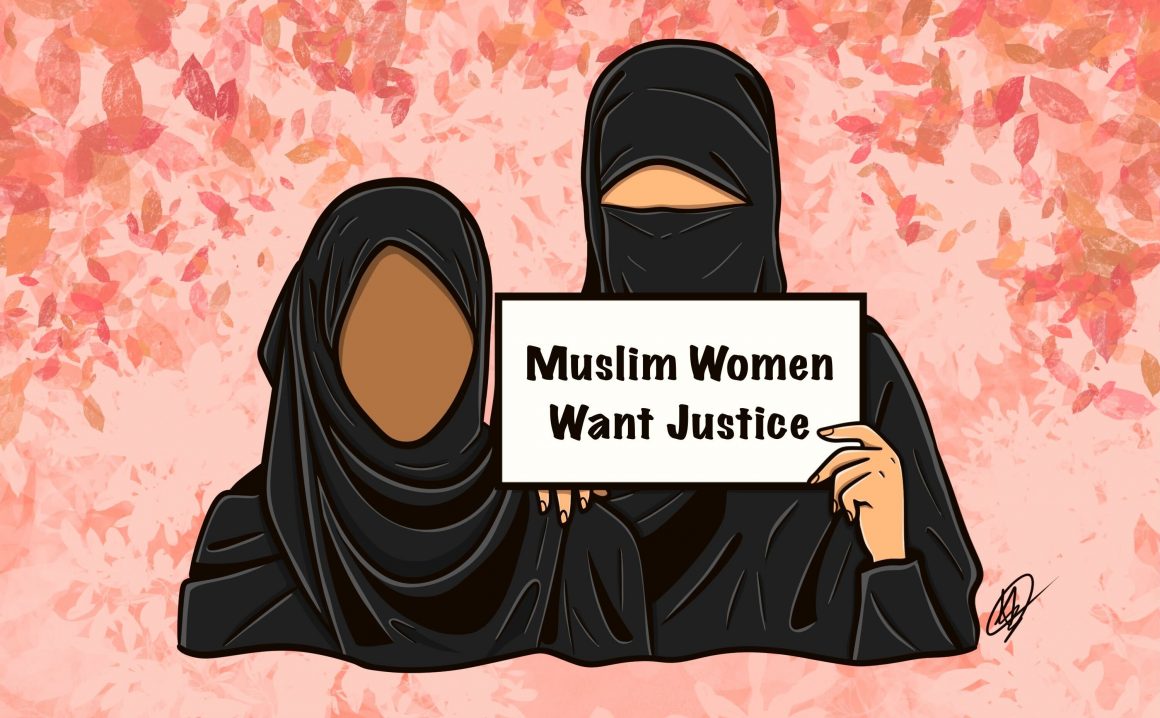
How Islamophobia heavily relies on misogyny to remain effective
By Aymen Sherwani, February 1 2022—
Not even one week into the new year, arrests were made in India after two app developers launched a website where Muslim women were put up for sale, featuring the photos of vocal female activists, journalists, lawyers and public figures — including Malala Yousafzai. This auction of sorts did not have the intention to actually sell the women plastered on their platform but rather to dehumanize and intimidate them into silence — a reflection of the rising far-right Hindu nationalist sentiments sweeping across India that join the broader tides of global misogyny-rooted Islamophobia.
All around the world, there is a negative hyper-fixation upon Muslim women which can also be argued to be at the core of Islamophobia itself. This is because Muslim women are the most visible and distinct aspect of Islam and consequently also the most targeted — with misogyny being a significant factor explaining why the world feels a certain degree of entitlement towards their presence, words and actions.
If she simply exists and wears a hijab, even if it’s her own decision to cover up, a Muslim woman is a threat to secularism and modernity — as seen with the recent firing of a school teacher from a Quebec elementary school for refusing to remove her hijab. In France, female Muslim politicians have been barred from running in elections for the same reason.
More close to home, Black, Muslim women in Edmonton have lived in fear of being attacked throughout 2021 as a series of assaults against them has left many feeling abandoned by the government and law enforcement. In China, Uyghur Muslim women have been vocal about being forcibly sterilized as made evident by rapidly declining birth rates and increasing IUD implants in the Xinjiang province — alleged to be an anti-extremist effort by the Chinese government.
Are these Muslim women really extremists or simply easy political targets as a result of their already marginalized status of womanhood? More importantly, who are the real extremists here? Women who simply exist and practice their faith or those that support the practice of weaponized secularism?
Women, in general, are already at the risk of being attacked when walking alone at night — a study by researchers Hannah Mason-Bish and Irene Zempi reports that wearing a veil or being a visible minority increases that risk.
“Their visibility, combined with their popular portrayal as culturally dangerous or threatening means that they are vulnerable to receiving verbal and physical threats, which can be misogynistic and Islamophobic in nature,” the study asserts.
Should a Muslim woman be vocal about her identity, she is told that her faith is the antithesis to empowered womanhood. While previously volunteering at the courthouse, on my first day of work I was told that — because of my identity — I would never be given the opportunity to excel in the legal field. I was asked a few times why and how I could be both an advocate against Islamophobia and a feminist.
These are not two radically opposed concepts. This infantilization of Muslim women — as if they’re helpless and don’t know any better — can only be described as an orientalist obsession that’s rooted in racism and colonialism.
We are activists, scholars, journalists and politicians but are being reduced to two-dimensional abstractions which — to those in the Global North — can only serve two purposes. Either Muslim women can stand with their non-Muslim counterparts and uplift them as beacons of diversity — while also changing themselves to fit the mould of what someone living in the Global North should look like — or they are accused of disrupting the social fabric of society and supporting terrorism.
If history has taught us anything, the normalization of hatred towards any group is a slippery slope — especially dangerous when the entire world is watching and remains complicit.
